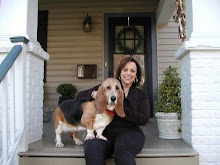According to award winning Blanche Evans, real estate expert:
Home prices are up, foreclosures are down, and the demand for mortgage loans is up - all trends that collectively signal that owning a home is not as risky as it’s been in recent years.
A new report by Clear Capital, an asset valuation data services provider, has found that housing prices in Q2 2010 rose 7.9% over the first quarter, and that sales momentum continued through June, taking only the slightest breather.
Year over year, prices were up 8.1% for the quarter. Among the reasons is a drop in bank-owned properties, to 22.l7%, which is 19.8% below the peak set in Q1 2009. Prices are 13.6% on steady growth since reaching a trough, also in Q1 2009, according to Dr. Alex Villacorta, senior statistician for Clear Capital.
By August, mortgage interest rates are at an all-time low. Benchmark 30-year, fixed-rates fell to the lowest levels since 1971, at 4.44%, spurring demand for refinancing as well as purchase loans. The Mortgage Bankers Association says that demand steadily increased through mid-August on record low rates. A year ago, interest rates were 5.17%.
Adding to the good news was the Commerce Department, which announced 1.7% more construction on home in July 2010 than the previous month.
The National Association of REALTORS® (NAR) also noted an increase of 1.5% in pending home sales, suggesting that demand for housing is growing again.
Following the expiration of the homebuyer tax credit which hurried sales forward for hurry-up buyers, both new home and existing home sales declined, prompting speculation that home prices would take a double dip from the last decline in 2009. In Q2 2010, the NAR found that 100 out of 155 metropolitan statistical areas reported higher median existing single-family home prices, including 14 with a double-digit increase.
Among the reasons for the improvement was fewer distressed homes were sold, only 32% of Q2 sales from 36% the year before.
Explains Lawrence Yun, chief economist for the NAR, “The recorded home prices in many markets were significantly depressed last year because of a large percentage of distressed homes sold at discount. Now as more normal, non-distressed home sales are occurring, the median price in many areas is showing higher values.”
In August 2010, the PMI Group, Inc., reflected the collective sigh of relief with a lower U.S. Market Risk Index. Using Q1 2010 data, the mortgage risk insurer noted that its index dropped to 51.9 from 53.8 for a third consecutive quarterly decrease.
Of the nation’s metropolitan statistical areas, 290 or 75.5% are pose less risk for housing than the previous quarter. That said, more than half, or 51.6% are still in PMI’s high-risk category, with higher unemployment rates, higher foreclosure rates, lower affordability, a larger excess housing supply, or more volatile housing prices than other MSAs with minimal to moderate risks.
But as other economists have found, there is a slow but steady improvement in economic indicators including home price appreciation, mortgage market affordability, employment, housing affordability returning to median norms, and lower foreclosure activity.
"Household formation is the most important demographic driver of housing demand and faster growth, as has occurred over the period since the middle of 2009,” explains David Berson, PMI chief economist, “corresponding to a pickup in the economy, should lead to greater market stability. "Ultimately greater stability of house prices will lead to declines in the Risk Index."
Subscribe to:
Post Comments (Atom)

No comments:
Post a Comment